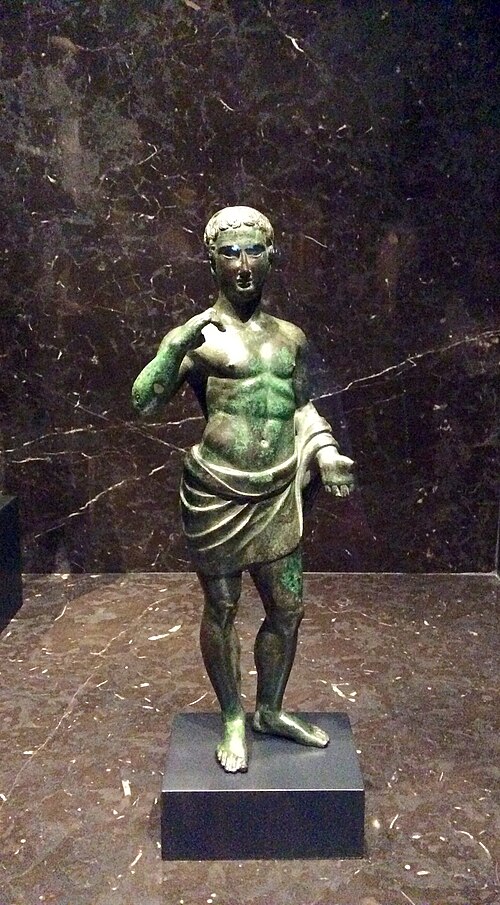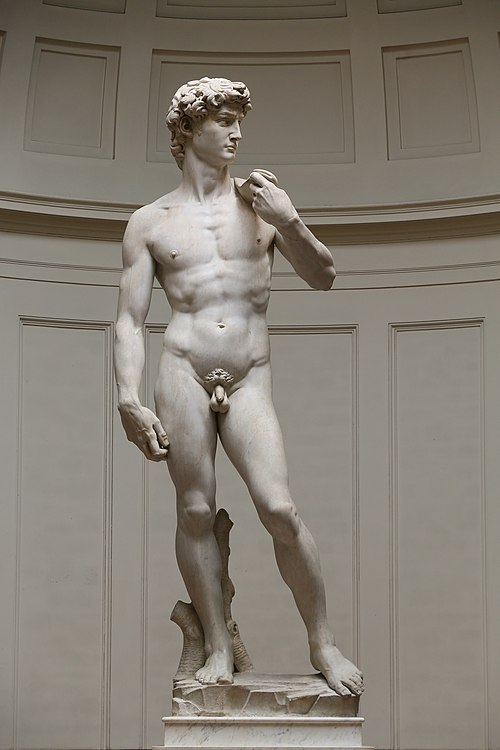Contrapposto
Videos
Page
Contrapposto is an Italian term that means "counterpoise". It is used in the visual arts to describe a human figure standing with most of its weight on one foot, so that its shoulders and arms twist off-axis from the hips and legs in the axial plane.

A marble copy of Polykleitos' Doryphoros, an early example of classical contrapposto.

Kritios Boy. c. 480 BCE, was the first known Greek statue to use contrapposto.

Etruscan statuette, from Italy, 3rd to 1st century BCE, bronze

The Venus de Milo depicts an S-curve body shape. Greek, c. 130–100 BCE.
Michelangelo
Videos
Page
Michelangelo di Lodovico Buonarroti Simoni, known mononymously as Michelangelo, was an Italian sculptor, painter, architect, and poet of the High Renaissance. Born in the Republic of Florence, his work was inspired by models from classical antiquity and had a lasting influence on Western art. Michelangelo's creative abilities and mastery in a range of artistic arenas define him as an archetypal Renaissance man, along with his rival and elder contemporary, Leonardo da Vinci. Given the sheer volume of surviving correspondence, sketches, and reminiscences, Michelangelo is one of the best-documented artists of the 16th century. He was lauded by contemporary biographers as the most accomplished artist of his era.

Portrait by Daniele da Volterra, c. 1545

The Madonna of the Stairs (1490–1492), Michelangelo's earliest known work in marble

Pietà, St Peter's Basilica (1498–1499)

David, completed by Michelangelo in 1504, is one of the most renowned works of the Renaissance.